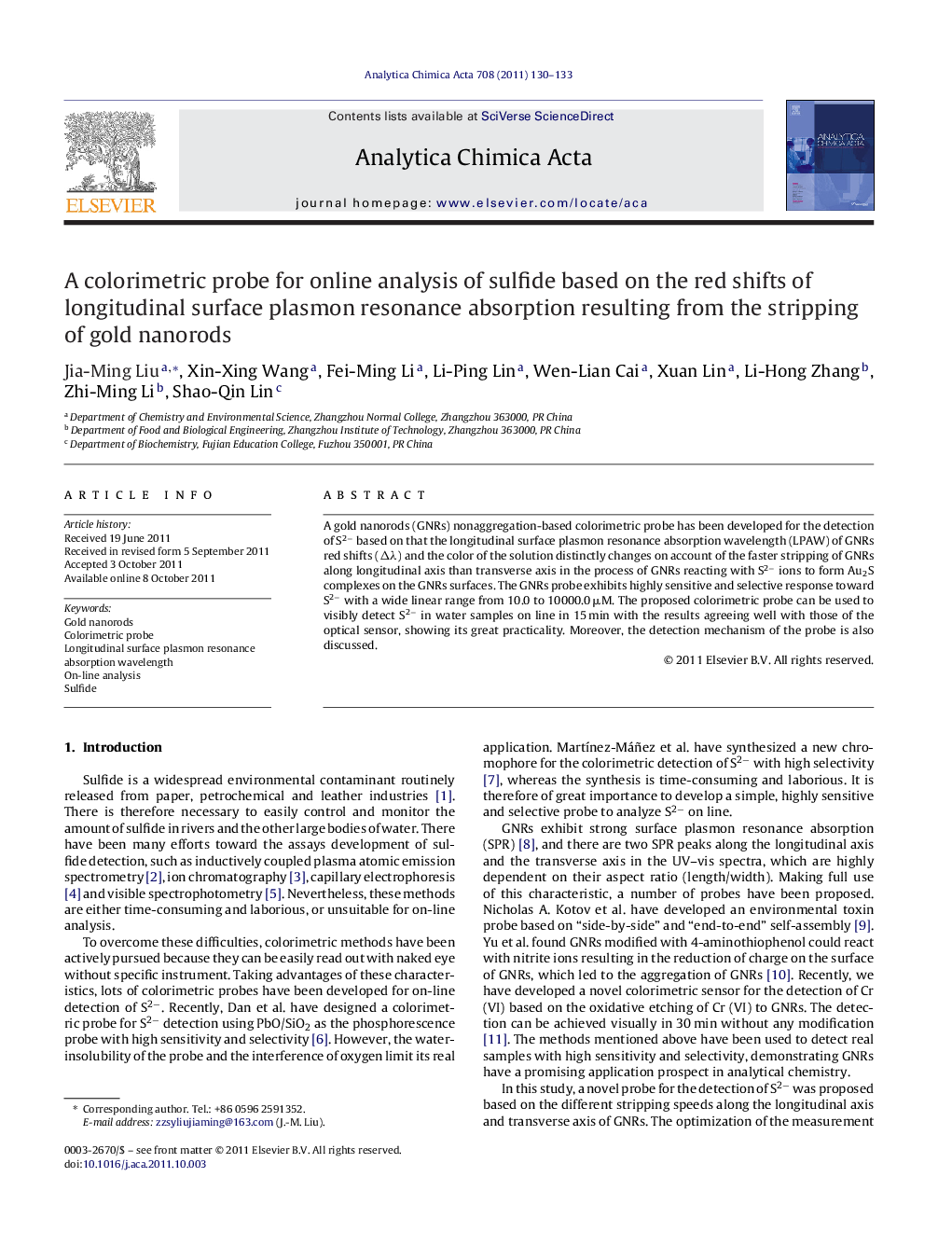| Article ID | Journal | Published Year | Pages | File Type |
|---|---|---|---|---|
| 1166390 | Analytica Chimica Acta | 2011 | 4 Pages |
A gold nanorods (GNRs) nonaggregation-based colorimetric probe has been developed for the detection of S2− based on that the longitudinal surface plasmon resonance absorption wavelength (LPAW) of GNRs red shifts (Δλ) and the color of the solution distinctly changes on account of the faster stripping of GNRs along longitudinal axis than transverse axis in the process of GNRs reacting with S2− ions to form Au2S complexes on the GNRs surfaces. The GNRs probe exhibits highly sensitive and selective response toward S2− with a wide linear range from 10.0 to 10000.0 μM. The proposed colorimetric probe can be used to visibly detect S2− in water samples on line in 15 min with the results agreeing well with those of the optical sensor, showing its great practicality. Moreover, the detection mechanism of the probe is also discussed.
Graphical abstractA nonaggregation-based colorimetric gold nanorods (GNRs) probe has been developed for the detection of sulfide based on the fact that the longitudinal surface plasmon resonance absorption wavelength (LPAW) of GNRs red shifts (Δλ) and the color of the solution distinctly changes on account of the faster stripping of GNRs along longitudinal axis than transverse axis in the process of GNRs reacting with S2− ions in solution to form Au2S complexes on the GNRs surfaces. The proposed colorimetric probe can be used to visibly detect S2− in water samples on line in 15 min with the results agreeing well with methylene blue trihydrate method, showing its great practicality. Moreover, the detection mechanism of the probe is also discussed. This research not only provides a new on-line detection technology for S2−, but also expands the application field of GNRs and promotes the development of colorimetric probes.Figure optionsDownload full-size imageDownload as PowerPoint slideHighlights► A nonaggregation-based colorimetric gold nanorods (GNRs) probe has been developed for the detection of sulfide. ► This probe has the sensitive response to red shift of longitudinal surface plasmon resonance absorption wavelength of GNRs. ► The GNRs probe exhibits highly sensitive and selective response toward S2− with a wide linear range from 10.0 to 10000.0 μM. ► The probe can be used to visibly detect S2− with the results agreeing well with methylene blue trihydrate method. ► The detection mechanism of the probe was discussed, which promoted the development of colorimetric probes.
